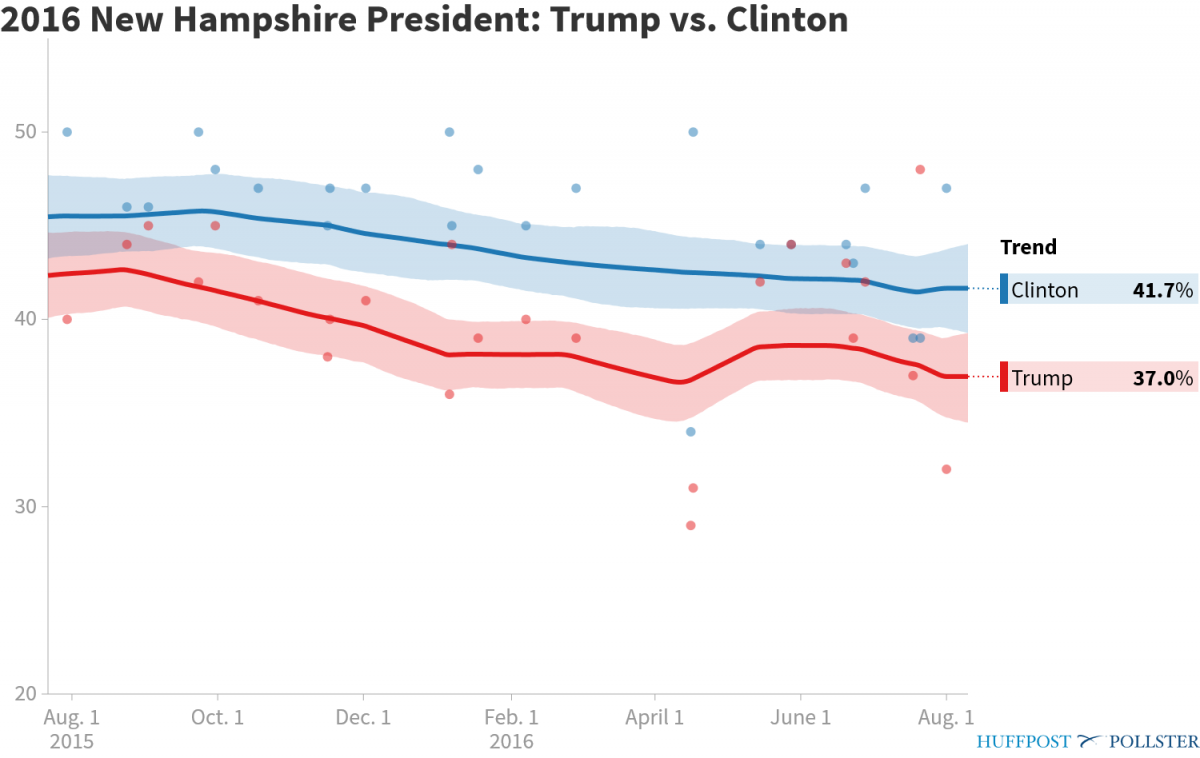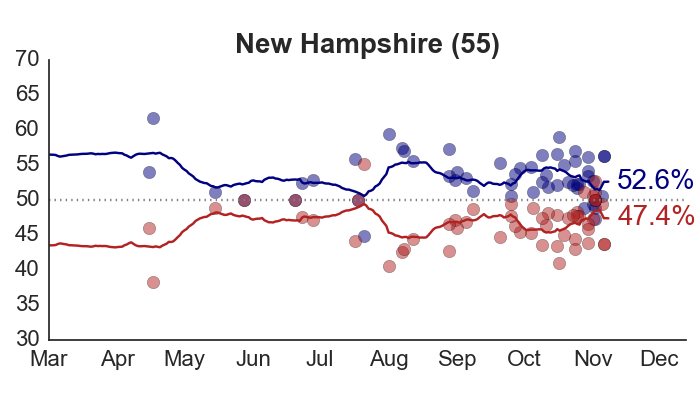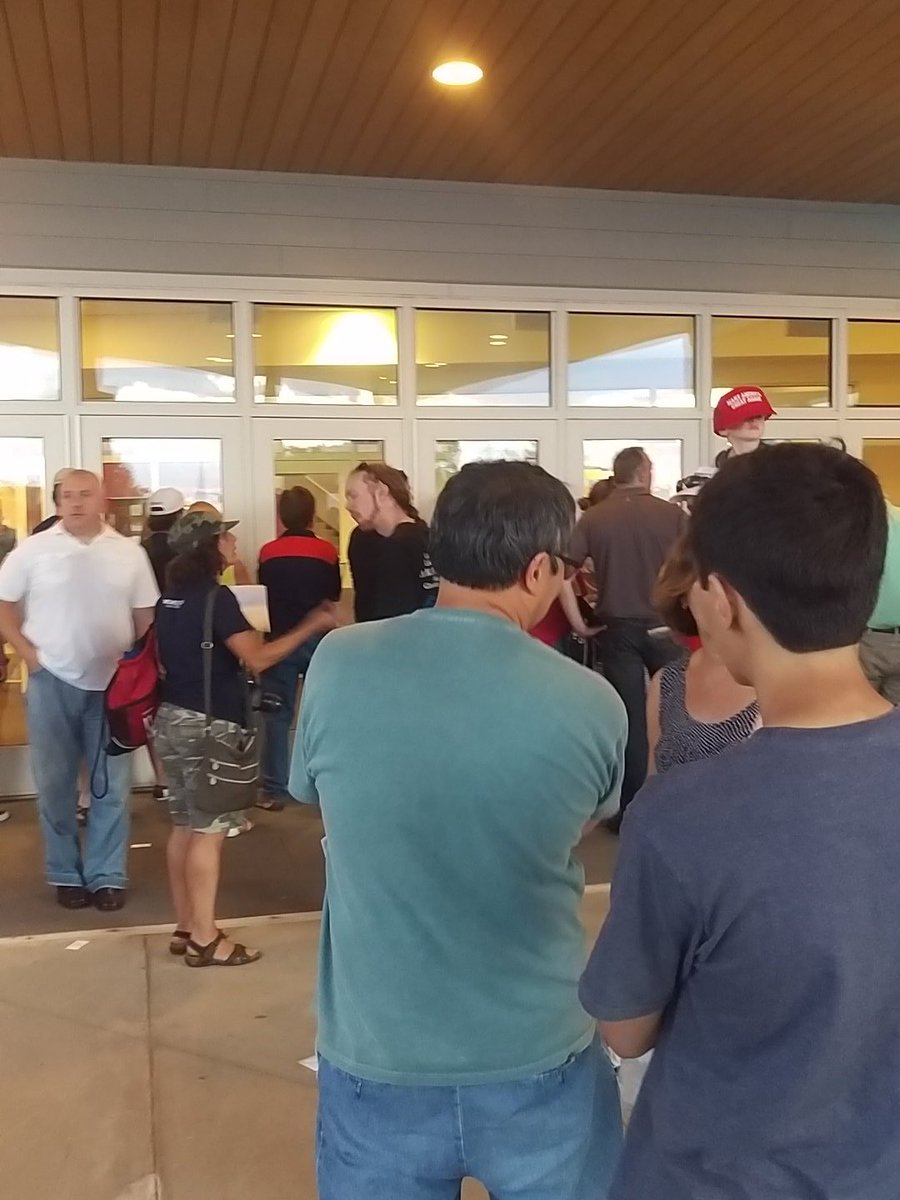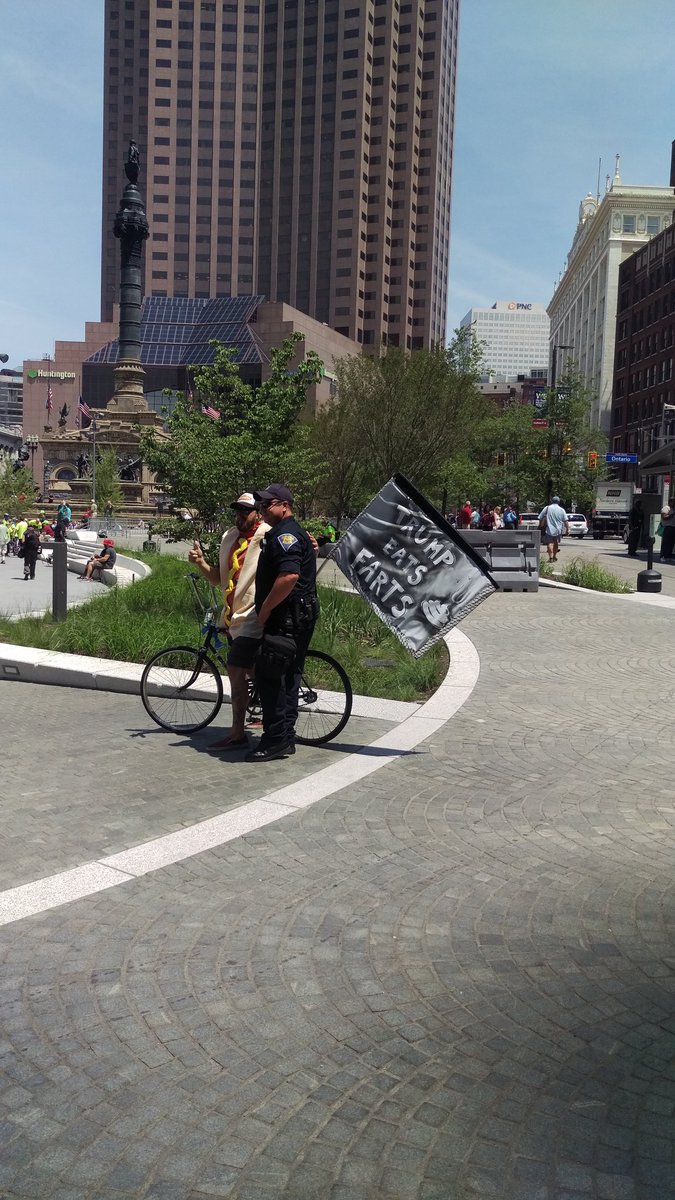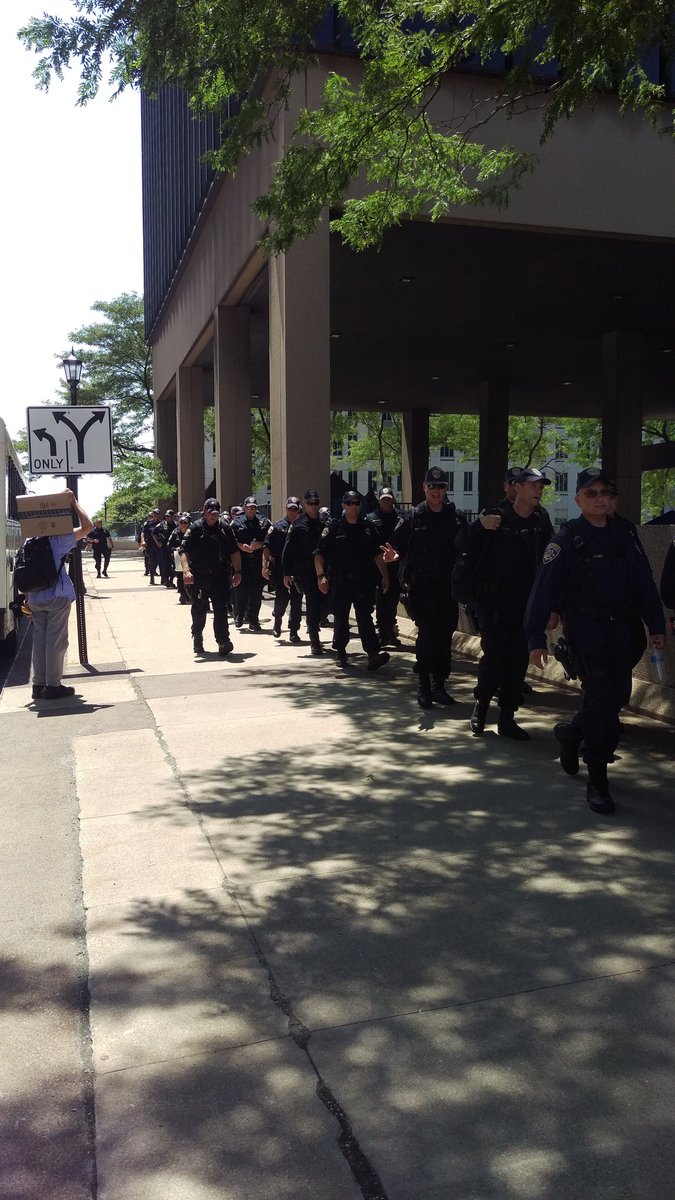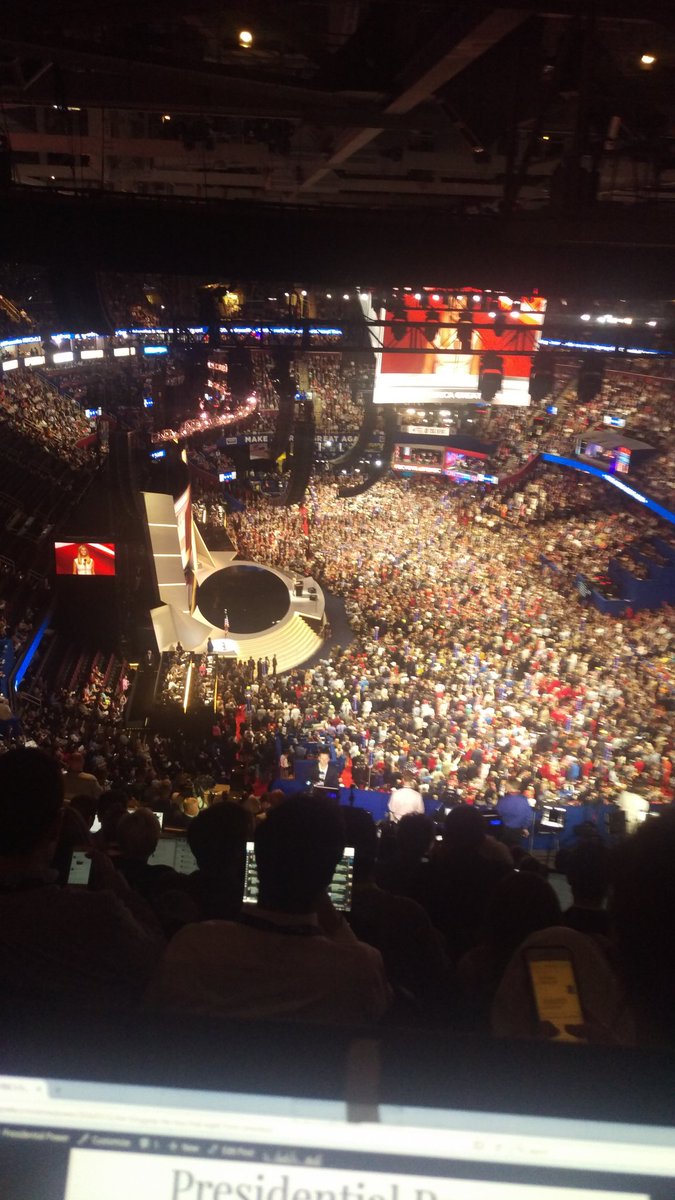The fact that the usual suspects responded in the usual ways to President Trump’s State of the Union speech does not make their analyses wrong – it just makes them predictable, and thus a less useful barometer for how the speech played outside the NYC-DC pundit beltway. Initial polling by CBS suggests that it was received relatively favorably by those who watched it – fully 75% of respondents “approved” of the speech – although it is worth remembering that audiences for these speeches are a self-selected group – something I was reminded of at my weekly politics luncheon yesterday when almost all of my “senior” (and left-leaning) students informed me they had no intention of watching Trump’s address. In this vein according to CBS, only a quarter of those they surveyed identified as Democrats – presumably they made up the bulk of those who disapproved. (My current undergraduates, on the other hand, promised that they would watch the speech – cue surprise quiz!) It is not clear as yet how large the television audience was, but for what it is worth Twitter reported that, fittingly, the Tweeter-in-Chief’s speech was the most tweeted about State of the Union speech to date. Focus groups also reacted in a somewhat positive manner to the speech, although sentiments were by no means uniform. Of course, public opinion may shift during the next few days in response to how the speech is characterized by cable news talking heads and other pundits. If a dominant theme or characterization of Trump’s speech takes hold, it can alter public perceptions at the margins.
If there is anything pundits might agree on, it is that Trump’s speech was long – one of the longest such speeches in history, according to some sources, clocking in at about an hour and 20 minutes, or only slightly shorter than Bill Clinton’s 2000 SOTU. Surprisingly – at least to some – he appeared to stay on script, more or less, although at times he seemed to dare Democrats in the audience to take issue with what he was saying. For the most part, however, they were content to sit on their hands and glower, with the exception of some scattered booing when Trump purported to explain what “chain migration” meant. Who knows how he might have reacted had a Democrat accused him of lying, for example?
Perhaps we should not have been surprised by his restraint; as I reminded my hosts in my pre-speech interview with KCBS radio when they asked me whether Trump would go off script, he proved quite disciplined in his first address to a joint session of Congress last year. So there was precedent for him to recognize and rise to the gravity of the moment, and to resist giving in to his coarser, bullying twitter-driven persona. Moreover, his delivery last night was relatively smooth and somewhat understated, with little of the nasal snorting that occasionally mars his public addresses. For the most part, he directed his remarks toward his left, where the Republican majority sat, and only turned right when he expected Democrats to respond positively to something he was saying. Republicans, in turn, reacted in a quite favorable – at times almost giddy – manner, standing and wildly applauding at all of the scripted moments, and for some unscripted ones as well judging by Trump’s evident surprise at their response. As far as one can judge from audience reactions, this speech was a huge hit with them, which of course made Democrats glower all the more.
While some critics noted the lack of detail in his discussion of policy, particularly in reference to his call for legislation totalling $1.5 trillion in spending on infrastructure, Trump correctly recognized that State of the Union addresses are best remembered for the thematic chords they strike, and the degree to which those chords are in harmony with broader public opinion. It is not a time for spelling out proposed legislation in detail. Consistent with that approach, he made frequent, and for the most part, very effective use of his invited guests in order to illustrate broader themes and related issues, ranging from parents of victims of the MS-13 gang, a victim fleeing North Korean persecution, military veterans, an Immigration and Customs Enforcement agent, first responders to hurricanes and wildfires, and business owners and employees benefiting from Trump’s tax legislation. Indeed, the story of Ji Seong-ho, the defector who lost limbs while struggling to survive under the North Korean regime, and who responded to Trump’s shout out by raising his crutches as a symbol of what he endured, was perhaps the most emotional tribute during the entire night.
Collectively, these guests, and the issues they symbolized, provide a window into Trump’s world view – one he sought to articulate in his speech last night. As I tweeted at the speech’s conclusion, Trump’s message was neither as fearful or gloomy as David Brooks and other critics asserted, nor as uplifting as Trump’s supporters proclaimed. Instead, Trump sought to remind his listeners that America serves as a beacon of hope in a sometimes very dark world; he appealed to “the better angels of our nature” while warning us that the devil lurks at America’s borders. Unity, he suggested, and with it security and prosperity, can only come by recognizing the reality that much of the world seeks to injure us, or to take advantage of our ideals. He praised the American experiment in self-government, but also warned that it cannot succeed if we do not correctly identify its enemies, and act accordingly. As he put it near the end of his speech:
“It was that same yearning for freedom that nearly 250 years ago gave birth to a special place called America. It was a small cluster of colonies caught between a great ocean and a vast wilderness. But it was home to an incredible people with a revolutionary idea: that they could rule themselves. That they could chart their own destiny. And that, together, they could light up the world.
That is what our country has always been about. That is what Americans have always stood for, always strived for, and always done. Atop the dome of this Capitol stands the Statue of Freedom. She stands tall and dignified among the monuments to our ancestors who fought and lived and died to protect her.
Monuments to Washington and Jefferson – to Lincoln and King.
Memorials to the heroes of Yorktown and Saratoga – to young Americans who shed their blood on the shores of Normandy, and the fields beyond. And others, who went down in the waters of the Pacific and the skies over Asia.”
For Trump, America endures because Americans have been willing to pay an often steep price to insure its survival. It is no surprise, then, that his guests were individuals who succeeded, or at least soldiered on, despite enduring great hardship – even personal tragedy. To his critics, of course, Trump’s vision is that of a bygone era; he seeks a return to a largely white America dating to the 1950’s, or before – one that has little place for people of color or immigrants from “sh*thole” countries. For his supporters, however, Trump’s America is one that transcends divisions based on race, ethnicity or other elements of identity politics – it is a place that focuses on the ideals we have always shared, rather than on what sets us apart. I suspect last night’s speech, while generally effectively delivered, did little to change those competing perspectives.
Trump also sought to take credit for the positive aspects of the state of the economy, highlighting low unemployment, a growth in manufacturing jobs, workplace bonuses, and a booming stock market, and linking those results to his deregulation efforts and tax reform legislation. As Trump put it, “In our drive to make Washington accountable, we have eliminated more regulations in our first year than any administration in history. We have ended the war on American Energy – and we have ended the war on clean coal. We are now an exporter of energy to the world. In Detroit, I halted Government mandates that crippled America’s autoworkers – so we can get the Motor City revving its engines once again.” (Interestingly, in his State of the Union rebuttal, Bernie Sanders sought to address those claims head on by returning to his familiar diatribe against uneven economic growth that benefits the 1%.)
The centerpiece of Trump’s speech, however, was his four-point immigration plan. On paper, it has something to appeal to both Democrats, with the path to citizenship for anyone qualifying for “Dreamer” status, and to Republicans, with the call for strong border security and a slowing in immigration levels and a movement toward skills-based entrance standards. However, early indications are that it is meeting the same headwinds emanating from the extremes of both congressional caucuses that doomed previous immigration legislation. If Trump can get major immigration legislation through Congress without enduring another government shutdown, it will be huge accomplishment, transcending even the tax bill in terms of significance. But that is a big “if”, and as I told WCAX’s Darren Perron earlier this month, I’m not optimistic.
History suggests that State of the Union speeches are perhaps most effective at raising the salience of issues, rather than helping forge congressional coalitions that lead to legislative successes. Still, if last night’s speech serves to focus public attention on the details of Trump’s immigration proposal, it might serve as a rallying point for moderates such as Susan Collins (R-ME) and Joe Manchin (D-WV) to find some common legislative ground. Whether that will be enough to overcome partisan resistance from the wings of both congressional caucuses remains to be seen. As Trump acknowledged in the traditional pre-SOTU meeting with correspondents, Republicans likely can’t pass immigration legislation on their own – they are going to require Democrats’ support. To get it will likely require further concessions by raising domestic spending caps. Of course, one speech does not a bipartisan coalition create. To get immigration through a deeply polarized Congress will require a lot more legislative wizardry than Trump has demonstrated to date. Still, his speech last night didn’t hurt the effort, and it probably helped – at least a little. But there’s a long way to go, and not much time in which to get there. Stay tuned. I’ll be on local television (WCAX) this evening to discuss Trump’s speech. In the meantime, let’s all remember what truly unites us (h/t to Andy Rudalevige!)



